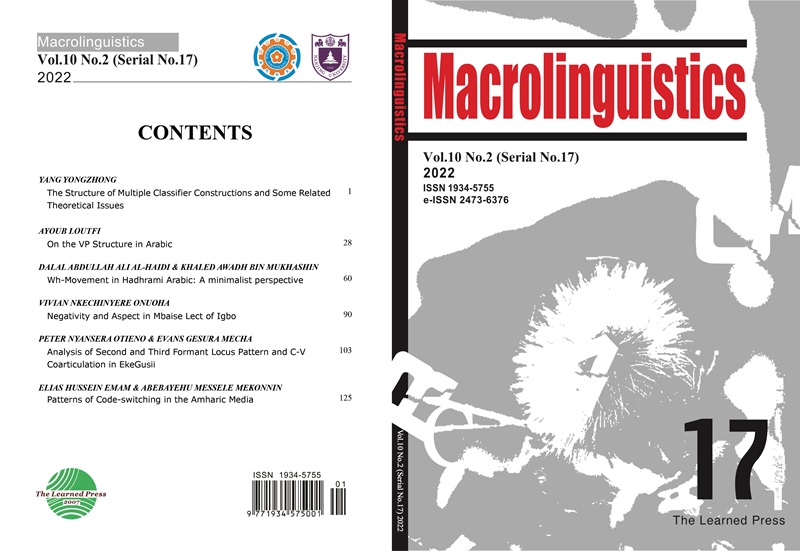Rule Ordering in Uvwie
引用次数: 0
Abstract
One of the assumptions underlying theories of phonological derivation is that the phonological architecture of any language consists of, at least, an abstract underlying form, its surface form and conditions which derive the surface form from its underlying form. It is further assumed that the conditions are serially ordered in frameworks which subscribe to the rule ordering such as orthodox generative phonology and lexical phonology. In the present study, these issues are engaged in the case of Uvwie. In particular, the study seeks to investigate the conditions (processes and rules) which derive surface forms from their corresponding underlying forms, and the order in which they apply. Thus the study will examine the different well-motivated phonological rules attested in the derivation of Uvwie formatives, and provide evidence for the order in which the processes apply. The study employe data documented in Ekiugbo (2016), and couched its analysis within rule ordering principle of generative phonology. The study identifies six rules, which are ordered thus: nasal assimilation > glide formation > vowel elision > tone fusion > vowel lengthening > consonant elision.Uvwie中的规则排序
语音派生理论的一个基本假设是,任何语言的语音结构至少包括一个抽象的底层形式、其表面形式以及从底层形式派生表面形式的条件。进一步假设条件在遵循规则排序的框架中是连续排序的,如正统生成音系学和词汇音系学。在本研究中,这些问题涉及Uvvie的案例。特别是,该研究试图调查从相应的底层形式衍生表面形式的条件(过程和规则),以及它们的应用顺序。因此,本研究将检验在Uvvie格式词的推导中证明的不同的动机良好的语音规则,并为这些过程的应用顺序提供证据。该研究采用了Ekiugbo(2016)中记录的数据,并在生成音系学的规则排序原则中进行了分析。该研究确定了六个规则,其顺序是:鼻同化>滑音形成>元音省略>音调融合>元音延长>辅音省略。
本文章由计算机程序翻译,如有差异,请以英文原文为准。
求助全文
约1分钟内获得全文
求助全文
来源期刊
自引率
0.00%
发文量
83
审稿时长
20 weeks
期刊介绍:
Macrolinguistics (ISSN 1934-5755, e-ISSN 2473-6376) is an international academic journal which is specialized in research papers of non-Indo-European linguistics. It is published biannually by The Learned Press and funded by the Double First-Class Initiative of Nanjing University. It aims at contributing to the complementarity and interaction of linguistic research worldwide.

 求助内容:
求助内容: 应助结果提醒方式:
应助结果提醒方式:


